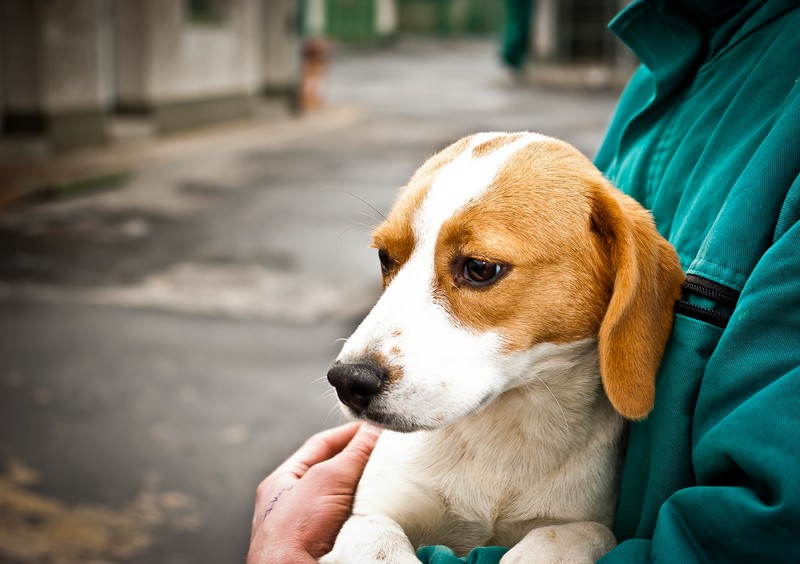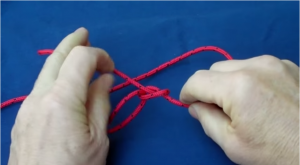Hopefully you have your disaster communication plan saved as a digital document so it will be easy to update with the information provided below. If you don't have a digital copy, you can always create a new document and store it in the same location as your original disaster plan.
Step 1: Get a Rescue Alert Sticker
This easy-to-use sticker will let people know that pets are inside your home. Make sure it is visible to rescue workers, and that it includes 1) the types and number of pets in your household; 2) the name of your veterinarian; and 3) your veterinarian's phone number. If you must evacuate with your pets, and if time allows, write “EVACUATED” across the stickers.
To get a free emergency pet alert sticker for your home, please fill out our online order form; please allow 6-8 weeks for delivery. Your local pet supply store may also sell similar stickers.
[Step 2]: Emergency Supplies and Traveling Kits
Keep an Evac-Pack and supplies handy for your pets. Make sure that everyone in the family knows where it is. This kit should be clearly labeled and easy to carry. Items to consider keeping in or near your pack include:
- Pet first-aid kit and guide book (ask your vet what to include, or visit the ASPCA Store to buy one online)
- 3-7 days' worth of canned (pop-top) or dry food (be sure to rotate every two months)
- Disposable litter trays (aluminum roasting pans are perfect)
- Litter or paper toweling
- Liquid dish soap and disinfectant
- Disposable garbage bags for clean-up
- Pet feeding dishes
- Extra collar or harness as well as an extra leash
- Photocopies of medical records and a waterproof container with a two-week supply of any medicine your pet requires (Remember, food and medications need to be rotated out of your emergency kit—otherwise they may go bad or become useless.)
- Bottled water, at least 7 days' worth for each person and pet (store in a cool, dry place and replace every two months)
- A traveling bag, crate or sturdy carrier, ideally one for each pet
- Flashlight
- Blanket (for scooping up a fearful pet)
- Recent photos of your pets (in case you are separated and need to make “Lost” posters)
- Especially for cats: Pillowcase or EvackSack, toys, scoopable litter
- Especially for dogs: Extra leash, toys and chew toys, a week's worth of cage liner.
You should also have an emergency kit for the human members of the family. Items to include: Batteries, duct tape, flashlight, radio, multi-tool, tarp, rope, permanent marker, spray paint, baby wipes, protective clothing and footwear, extra cash, rescue whistle, important phone numbers, extra medication and copies of medical and insurance information.
[Step 3]: Evacuation Preparation
-
Store an emergency kit and leashes as close to an exit as possible.
-
Make sure all pets wear collars and tags with up-to-date identification. Your pet's ID tag should contain his name, telephone number, and any urgent medical needs. Be sure to write your pet's name, your name and contact information on your pet's carrier.
-
The ASPCA recommends microchipping your pet as a more permanent form of identification. A microchip is implanted in the animal's shoulder area, and can be read by scanner at most animal shelters.
-
Always bring pets indoors at the first sign or warning of a storm or disaster. Pets can become disoriented and wander away from home during a crisis.
-
Consider your evacuation route and call ahead to make arrangements for boarding your pet outside of the danger zone at the first sign of disaster.
For the complete list of evacuation tips for animals, as well as instructions for specific climates and info specific for reptiles, please go to ASPCA. They are an excellent resource for you and your pets.



